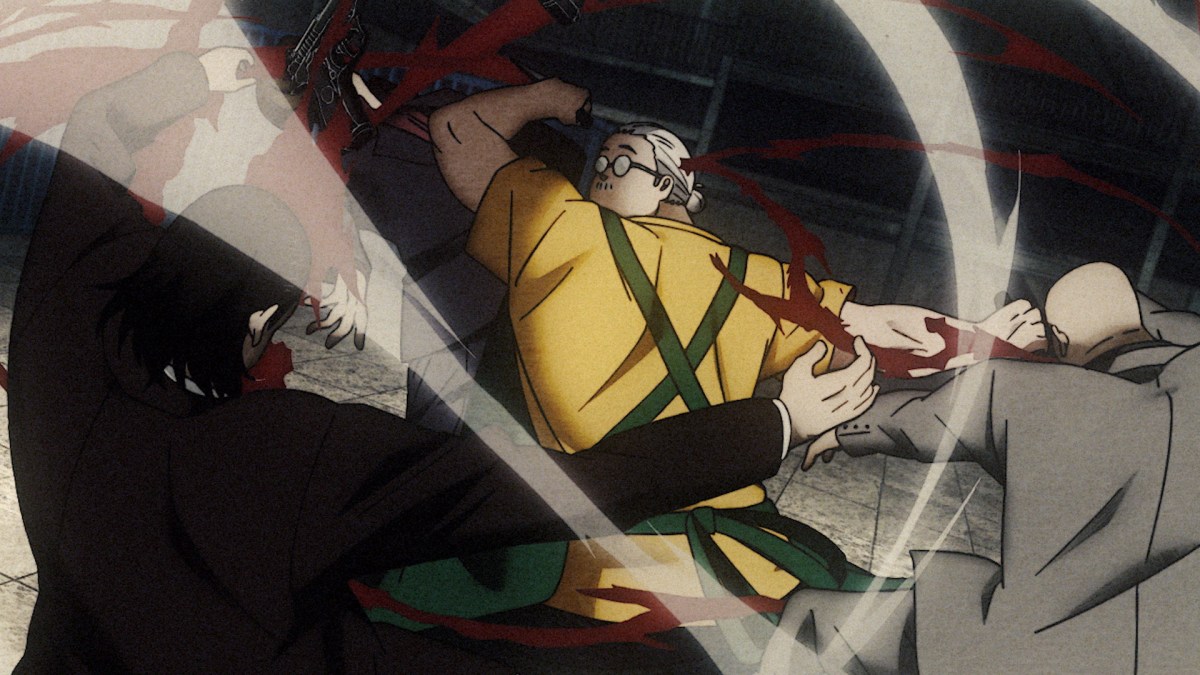How SAKAMOTO DAYS Leads Shonen’s Assassin Trend
Netflix’s SAKAMOTO DAYS elegantly encapsulates shonen’s growing trend where assassins, quirky contract killers, and found families reign supreme.

This article is presented in partnership with Netflix and appears in the Den of Geek x Sakamoto Days special edition releasing in mid-July. Sakamoto Days Part 2 releases on July 14.
Anime is truly a limitless storytelling medium that frequently pushes animation to unprecedented places. More than 200 anime are produced every year, which gives audiences plenty of freedom when it comes to what they watch and prioritize. Despite this level of autonomy, it’s interesting to note that shonen series—stories aimed at a young male audience, usually with an emphasis on action—often cause the biggest stir and become breakout international hits. To this point, nearly every entry in Netflix’s Top 15 most-watched anime of 2023 and 2024 is a shonen title.
Shonen anime represents the medium’s most mainstream and popular sensibilities, which makes it fascinating to chart and trend the shonen demographic’s evolving patterns.
SAKAMOTO DAYS Part 1 was in Netflix’s Top 10 for 10 of its first 11 weeks on the air, and it’s already being heralded as one of the biggest anime IPs to come out of the 2020s. The series follows Taro Sakamoto, a mild-mannered convenience store owner who was once revered as a legendary hitman. Sakamoto has spent some time out of the spotlight, but he’s just as adept as ever at his craft. The way in which SAKAMOTO DAYS deconstructs the assassin and contract killer subgenre, as well as the mythical hitman archetype at the center of it all, marks the shonen demographic’s shifting sensibilities, and perhaps where its future is headed.
General anime audiences often turn to shonen titles to get a taste of modern storytelling trends that function as a fascinating microcosm of society. While anime and manga that focus on contract killers is nothing new for shonen, there’s been a push toward more subversive assassin stories that feature unconventional killers who are stuck in some “fish out of water” scenario. This was an anomaly back when Katekyō Hitman Reborn! and Assassination Classroom came along in the 2010s, both of which used supernatural and sci-fi scenarios to rejuvenate the contract killer hero trope. Now the pages of Weekly Shonen Jump are filled with series that lean into such an ethos: Kill Blue, Mission: Yozakura Family, Shinobi Undercover, and SAKAMOTO DAYS.
Shonen’s recent fascination with altruistic and empowered assassins speaks to a world where audiences want to believe that they have the power to rage against the machine and dismantle the status quo through atypical advantages. This is different from shonen series, where there are superheroes with supernatural powers. After all, this is a wish-fulfillment fantasy that remains rooted in reality, even when SAKAMOTO DAYS indulges in absurdism.
This emphasis on control is also a natural response to the “Dark Trio” of grim, oppressive dystopian shonen titles—Chainsaw Man, Jujutsu Kaisen, and Hell’s Paradise: Jigokuraku—where victory feels impossible. These past titles push death and pain to uncomfortable extremes that get lost in the trauma and grief of it all. SAKAMOTO DAYS and the new wave of shonen content create a much-needed release valve that pushes back from the oppressive misery that used to dominate the demographic.
SAKAMOTO DAYS and its assassin shonen peers feature copious body counts, but this new crop of stories never sensationalizes their murders. Taro Sakamoto even staunchly respects a “no kill” code as a loving gesture to his wife. To this point, these shonen series are more interested in celebrating the tender bonds and sweet emotions that come from family, whether biological or forged together. SAKAMOTO DAYS, Spy x Family, Shinobi Undercover, and more all emphasize the power of family and how a loving community is more valuable than any weapon. This optimistic disposition helps these series stay cheerful rather than diverging into more adult seinen tendencies that get lost in the dark. This empathy is crucial to the equation and why SAKAMOTO DAYS works as well as it does. It demystifies hitmen into peculiar protectors, which helps the anime further establish its voice and push the subgenre to unexpected places.
SAKAMOTO DAYS is leading the pack when it comes to the exciting generation of assassin shonen series. This subgenre’s dominance in shonen anime and manga has been beneficial to SAKAMOTO DAYS’ success, but these stories don’t exist in a vacuum. They’ve also become the norm in American blockbusters. This helps SAKAMOTO DAYS connect on an even stronger level since fiction from around the world echoes its genre, characters, and style of storytelling.
SAKAMOTO DAYS feeds into this energy and helps the subgenre evolve. It’s an encouraging feedback loop that reflects a universal trend toward tentpole assassin stories. Netflix’s The Killer and Hit Man were both two of 2023 & ’24’s top titles, respectively, and it’s not hard to picture any of Team Sakamoto taking on these heightened hitmen archetypes. SAKAMOTO DAYS continues to succeed—more so than some of its anime peers—because it capitalizes on this trend. It tells the stories that audiences from across the world want to see, but contextualizes them into a quirky action-comedy anime.
It’s never been so hip to be a hitman.
New episodes of SAKAMOTO DAYS Part 2 premiere Mondays on Netflix through Sept. 22.
